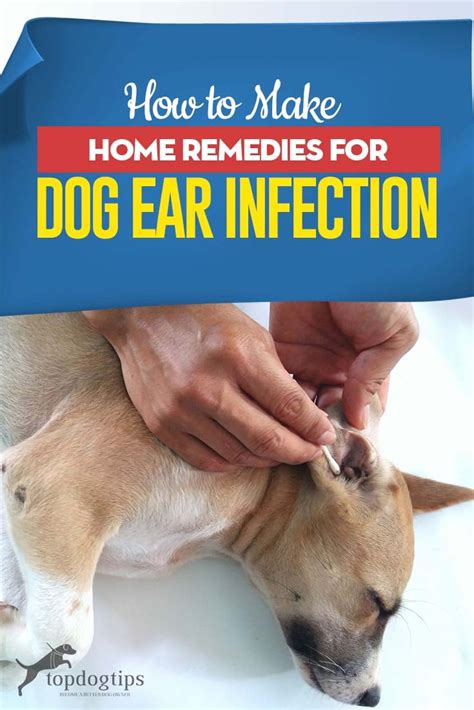How to Treat a Dog's Infected Ear: A Comprehensive Guide
A dog's ear infection can be incredibly distressing for both the pet and the owner. Itching, scratching, head shaking, and even pain are common symptoms, making it crucial to address the issue promptly. This guide will walk you through identifying the signs of an infected ear, exploring home remedies (when appropriate), and understanding when professional veterinary intervention is necessary.
Recognizing the Signs of an Ear Infection in Dogs
Before attempting any treatment, it's vital to correctly identify an ear infection. Several telltale signs can indicate a problem:
- Head shaking: Excessive and persistent head shaking is a major red flag.
- Scratching at the ears: Your dog might constantly paw or rub at their ears.
- Ear discharge: Look for any discharge – it could be brown, yellow, green, or bloody, and may have a foul odor.
- Redness and swelling: Inflammation around the ear flap is a common symptom.
- Pain: Your dog might exhibit signs of pain when you touch their ears.
- Loss of balance: In severe cases, an infection can affect balance.
- Hearing loss: While less common, infection can impact hearing ability.
Important Note: This information is for educational purposes only and should not replace professional veterinary advice. Always consult your veterinarian for diagnosis and treatment.
When to See a Vet Immediately
While some minor ear irritations might respond to home care, certain situations require immediate veterinary attention:
- Severe pain or distress: If your dog is showing signs of significant discomfort, seek veterinary help immediately.
- Bleeding or excessive discharge: These warrant immediate professional evaluation.
- No improvement after home remedies: If symptoms persist or worsen despite home treatment, a vet visit is crucial.
- Suspected foreign object: If you suspect something is lodged in your dog's ear, do not attempt removal yourself; see a veterinarian.
Home Remedies (Consult your vet first!)
Disclaimer: The following suggestions are for mild cases only, and always after consulting your veterinarian. They are not a substitute for professional veterinary care.
- Ear Cleaning (with vet approval): Your vet might recommend a gentle ear cleaner specifically formulated for dogs. Follow their instructions carefully. Never use cotton swabs, which can push debris further into the ear canal and cause damage.
- Warm Compress: Applying a warm compress to the affected ear might soothe discomfort, but only after vet approval and as part of a larger treatment plan.
Preventing Ear Infections
Preventing ear infections is key to maintaining your dog's health and comfort. Here are some proactive steps:
- Regular Ear Cleaning: Keep your dog's ears clean, especially breeds with floppy ears prone to infections. Consult your vet for cleaning frequency recommendations.
- Dry Ears After Bathing: Ensure your dog's ears are thoroughly dried after bathing to prevent moisture buildup.
- Healthy Diet: A nutritious diet supports a healthy immune system, reducing the risk of infections.
- Tick and Flea Prevention: Parasites can contribute to ear infections. Use appropriate preventative measures.
- Regular Vet Checkups: Regular checkups allow for early detection of any potential issues.
Conclusion
Dealing with a dog's infected ear requires careful observation, timely intervention, and collaboration with your veterinarian. Remember, home remedies are supplementary and should only be used under veterinary guidance. Prioritizing your dog's health by seeking professional help when needed ensures their comfort and well-being.
